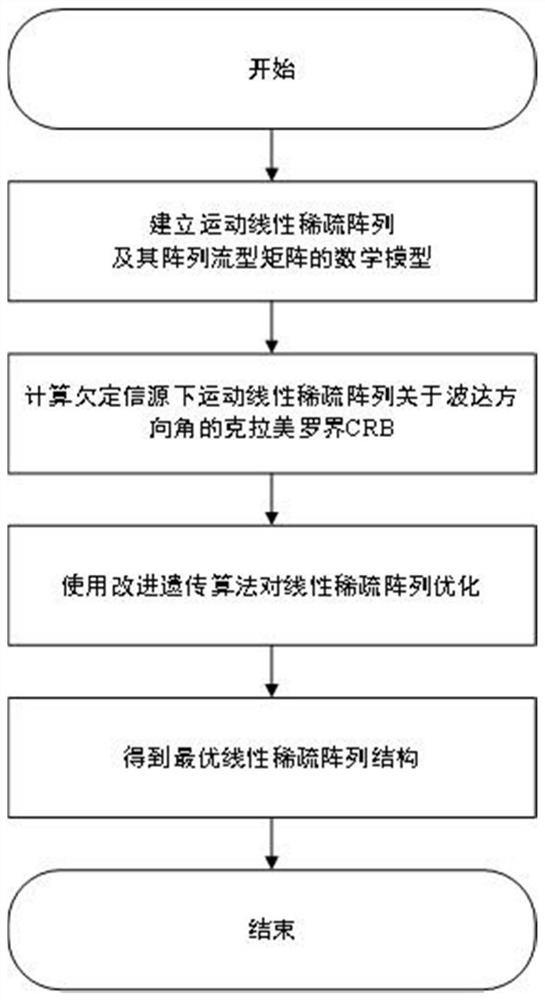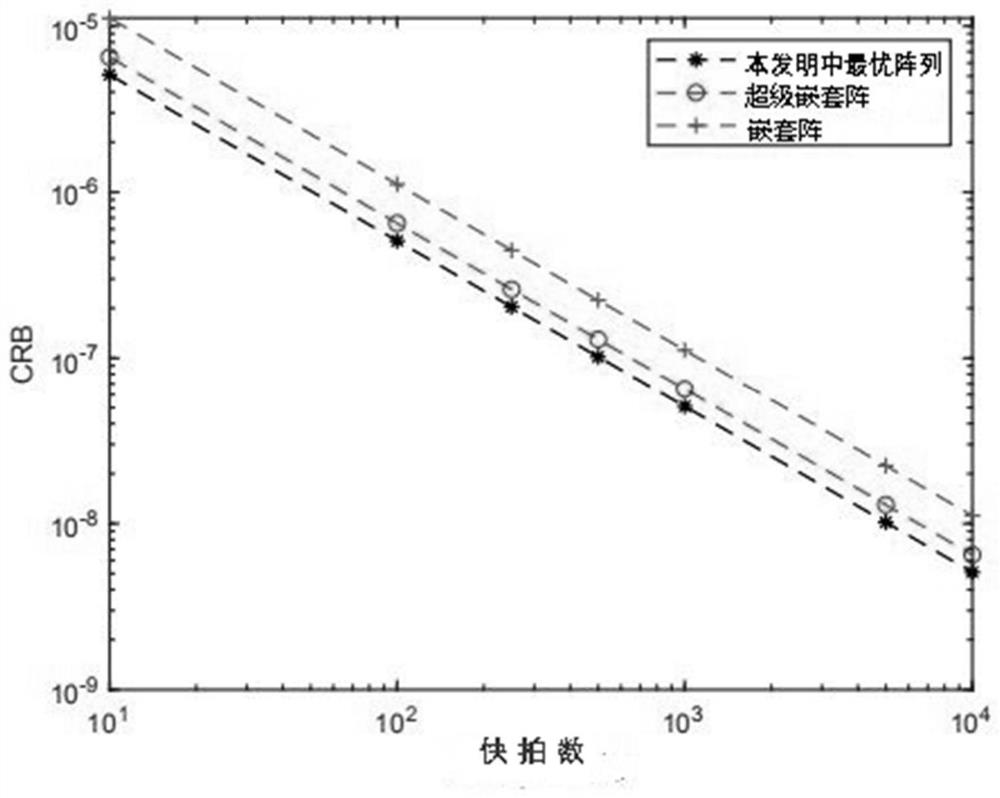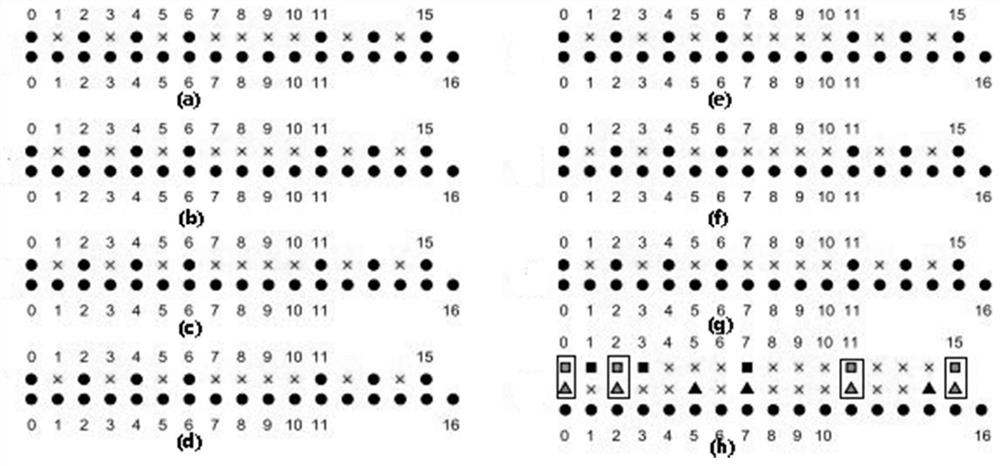Motion linear sparse array optimization method based on underdetermined signal source Cramer-Rao bound
A technology of sparse array and optimization method, which is applied in the direction of direction determination, genetic rules, gene models, etc., can solve the problem of insufficient performance of direction of arrival estimation
- Summary
- Abstract
- Description
- Claims
- Application Information
AI Technical Summary
Problems solved by technology
Method used
Image
Examples
Embodiment 1
[0033]In the prior art, the applications of sparse arrays are mostly limited to linear sparse arrays with closed expressions, such as nested arrays and coprime arrays. These arrays have one thing in common, that is, when the aperture and the number of array elements are determined, the structure of the array is fixed immediately. When the signal environment changes and the estimation performance of the original array decreases, there are generally two methods to restore the original estimation performance. One is to increase the array aperture or the number of array elements, and improve the degree of freedom of the array from the physical structure; Mounted on a motion platform, the motion characteristics of the array are used to improve the degree of freedom of the array; however, the disadvantages of these two methods are obvious. Leaving aside whether the aperture of the array and the number of array elements can be increased infinitely, from the perspective of factors aff...
Embodiment 2
[0056] The motion linear sparse array optimization method based on the undetermined source Cramereau bound is the same as that in embodiment 1, and the Cramero bound CRB(θ) of the linear sparse array under the underdetermined source with respect to the direction of arrival angle is calculated in step 2) of the present invention , including the following steps:
[0057] (2.1): Calculate the differential array flow pattern matrix and its augmented matrix of the linear sparse array: let θ q is the direction of arrival angle of the qth signal source, q=1,...,Q, then the differential array steering vector of the qth signal source is
[0058]
[0059] Considering all signal sources, the steering vector is extended to array flow pattern matrix, then the differential array flow pattern matrix is
[0060]
[0061] The corresponding augmented matrix is e 0 defined as follows
[0062]
[0063] γ Represents the γth element of the vector, m is the difference array D c The ...
Embodiment 3
[0084] The motion linear sparse array optimization method based on the undetermined source Kramero bound is the same as that of embodiment 1-2, and the improved genetic algorithm is used in step 3) of the present invention to optimize the linear sparse array, including the following steps:
[0085] Order N p Indicates the population size, that is, the total number of individuals in the population, p s Indicates the selection probability, N c Indicates the number of crossovers, p m Indicates the mutation probability; N i Indicates the total number of iterations, μ indicates the initial CRB value, p c Indicates the probability of optimal selection; the specific steps of linear sparse array optimization based on the improved genetic algorithm are as follows:
[0086] (3.1): Initialize the first generation population P 0 : Randomly generate N p non-repetitive linear sparse arrays with CRB smaller than μ, let the current iteration number i=0.
[0087] (3.2): Enter the algori...
PUM
 Login to View More
Login to View More Abstract
Description
Claims
Application Information
 Login to View More
Login to View More - R&D
- Intellectual Property
- Life Sciences
- Materials
- Tech Scout
- Unparalleled Data Quality
- Higher Quality Content
- 60% Fewer Hallucinations
Browse by: Latest US Patents, China's latest patents, Technical Efficacy Thesaurus, Application Domain, Technology Topic, Popular Technical Reports.
© 2025 PatSnap. All rights reserved.Legal|Privacy policy|Modern Slavery Act Transparency Statement|Sitemap|About US| Contact US: help@patsnap.com



